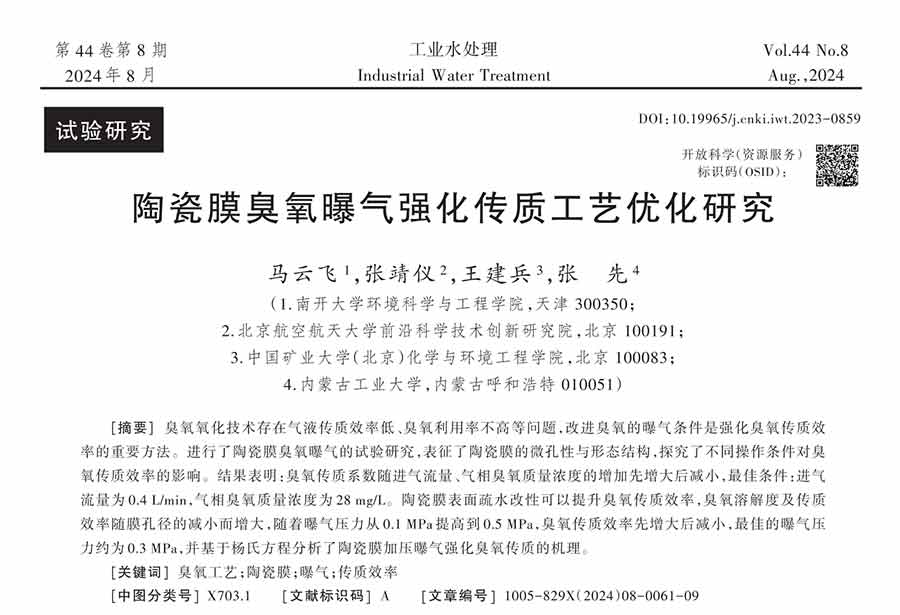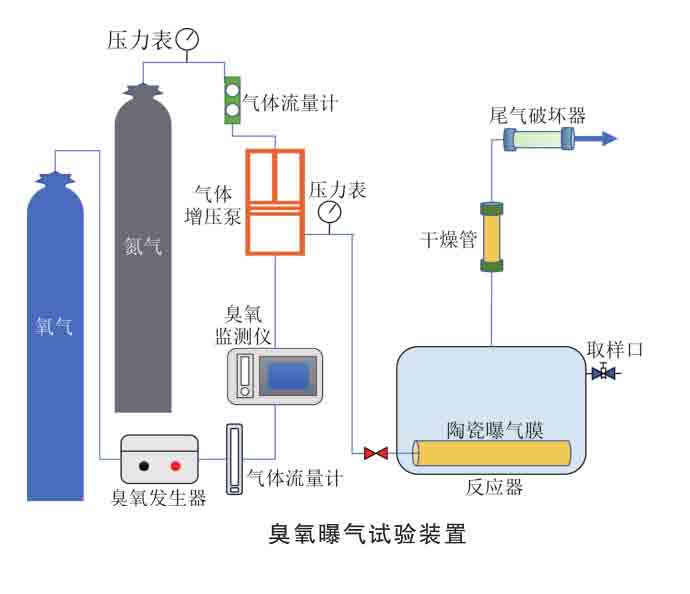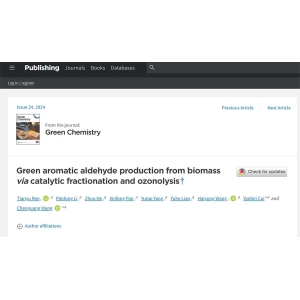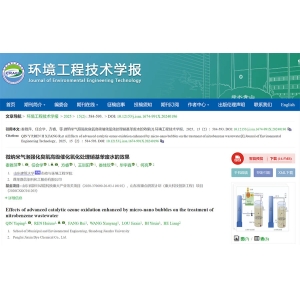Research on Optimization of Ceramic Membrane Ozone Aeration Enhanced Mass Transfer Process
Research on Optimization of Ceramic Membrane Ozone Aeration Enhanced Mass Transfer Process

1. Article information
Title: Study on optimization of mass transfer enhanced by ceramic membrane ozone aeratior
2. Article link
DOI: 10.19965 / i.c nki. Iwt. 2023-0859
3. Journal Information
Journal Title: Industrial Water Treatment
4. Author Information: Ma Yunfei, Zhang Jingyi, Wang Jianbing, Zhang Xian
College of Environmental Science and Engineering, Nankai University, Tianjin 300350;
Institute of Frontier Science and Technology Innovation, Beihang University, Beijing 100191;
School of Chemical and Environmental Engineering, China University of Mining and Technology (Beijing), Beijing 100083;
Inner Mongolia University of Technology, Hohhot, Inner Mongolia 010051;
5. The product models used in the text: Ozone Generator 3S-T10, Ozone detector 3S-J5000, Ozone tail gas Destructor

Abstract: Ozonation technology has problems such as low gas-liquid mass transfer efficiency and low ozone utiliza.tion. The improvement of ozone aeration conditions is an effective approach to enhance ozone mass transfer. In this regard, an experimental study of ozone aeration with ceramic membranes was carried out to characterize the micropo rosity and morphological structure of ceramic membranes, and to investigate efects of different operating conditions on ozone mass transfer. 'The results showed that the ozone mass transfer coefficient firstly increased and then decreased with the inerease of inlet gas flow rate and gas-phase ozone concentration. The optimal conditions were 0.4 L/min and 28 mg/L. The hydrophobic modification of ceramic membrane surface could enhance the ozone mas transfer efficiency. Ozone solubility and mass transfer efficiency increased with the decrease of membrane pore size With the inerease of aeration pressure from 0.1 MPa to 0.5 MPa, the ozone mass transfer efficiency firstly inereased and then decreased, and the optimal aeration pressure was about 0.3 MPa. The mechanism of ceramic membrane pressurized aeration to strengthen the ozone mass transfer was analyzed based on Young-Laplace equation.
 Green aromatic aldehydes production from biomass via catalyt
Green aromatic aldehydes production from biomass via catalyt
 Effects of advanced catalytic ozone oxidation enhanced by mi
Effects of advanced catalytic ozone oxidation enhanced by mi
 Research on Optimization of Ceramic Membrane Ozone Aeration
Research on Optimization of Ceramic Membrane Ozone Aeration
 Molecular comparison of organic matter Removal in shale gas
Molecular comparison of organic matter Removal in shale gas

 Russian
Russian 簡(jiǎn)體中文
簡(jiǎn)體中文